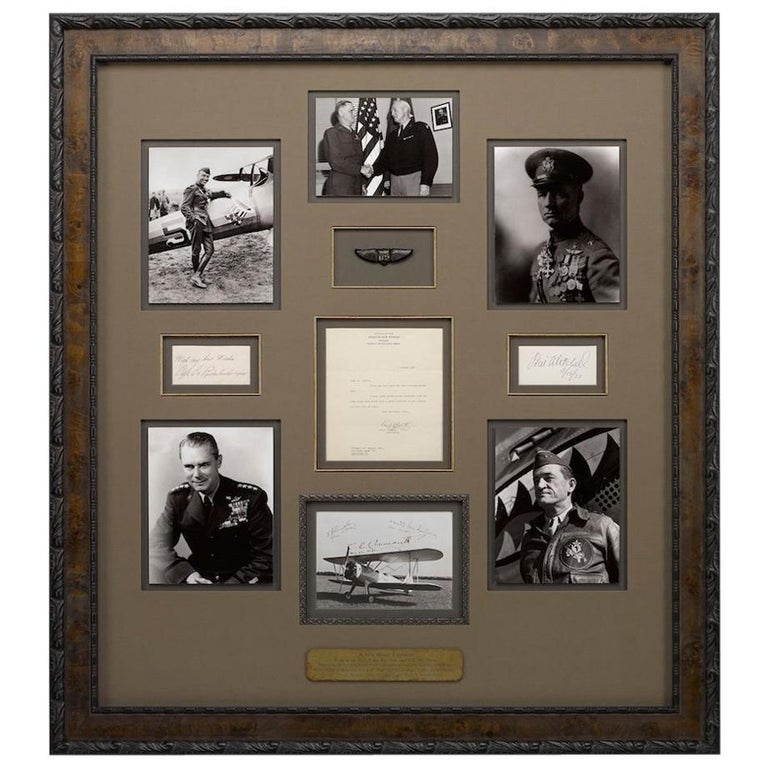
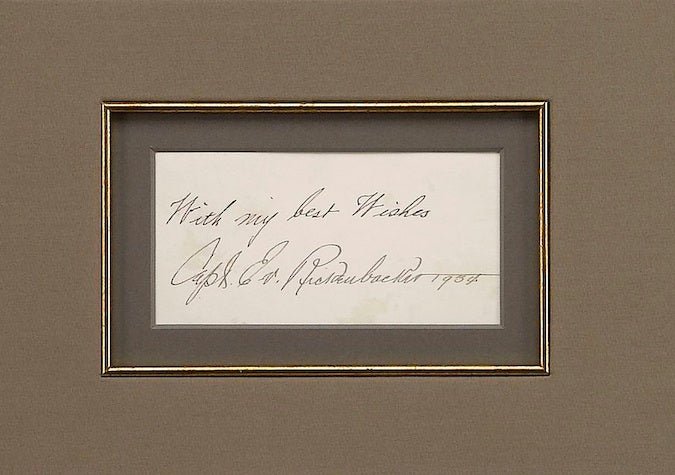
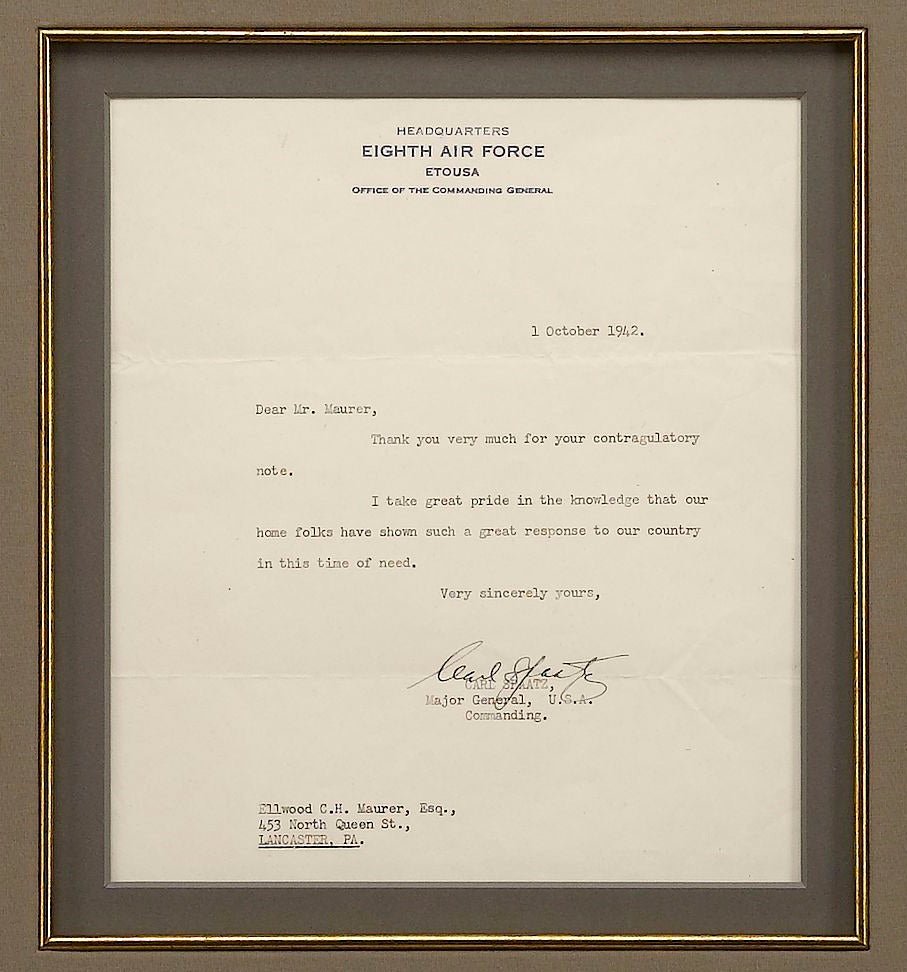
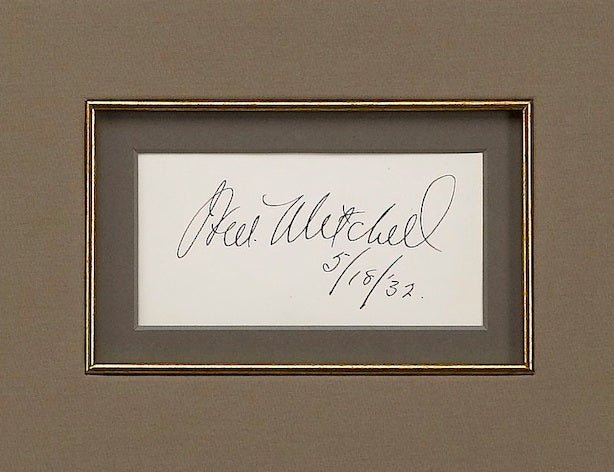
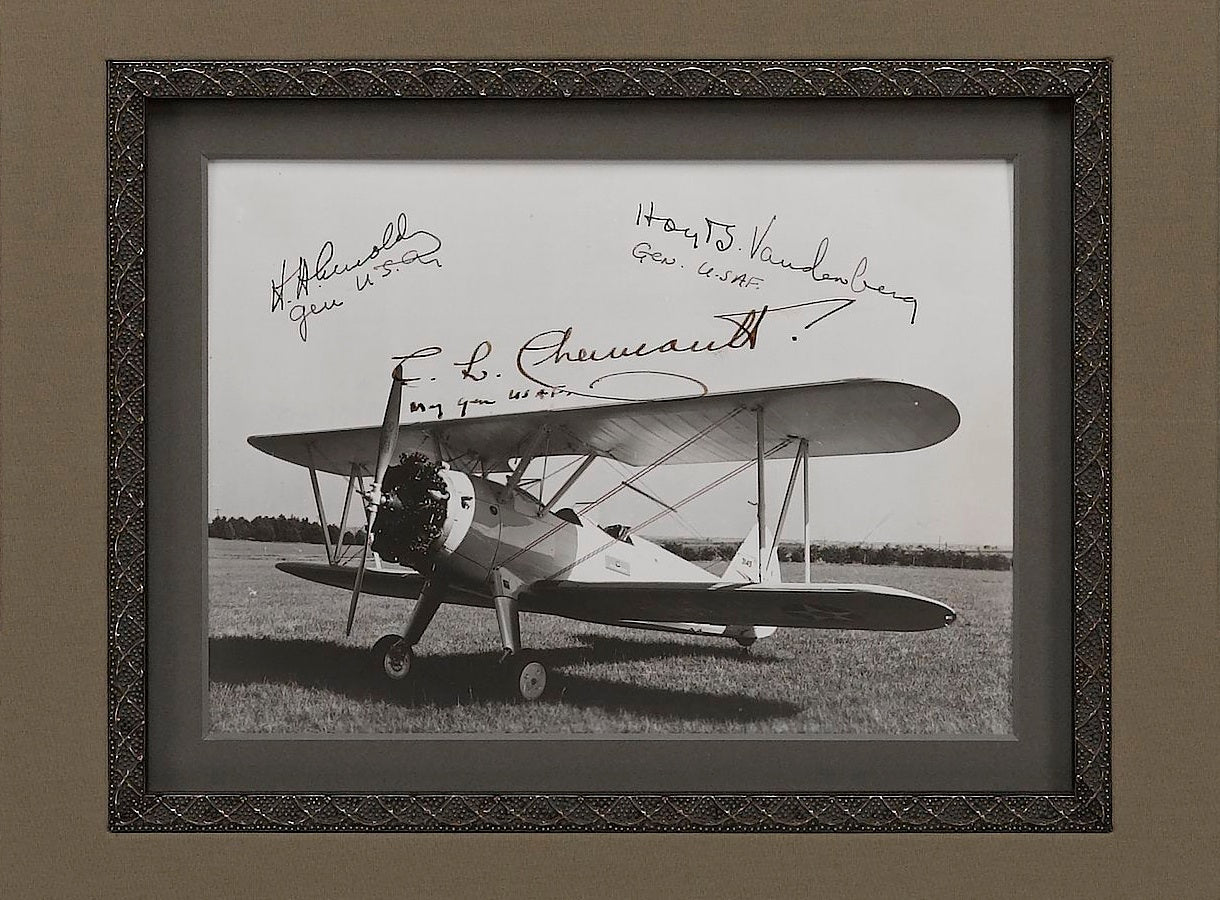
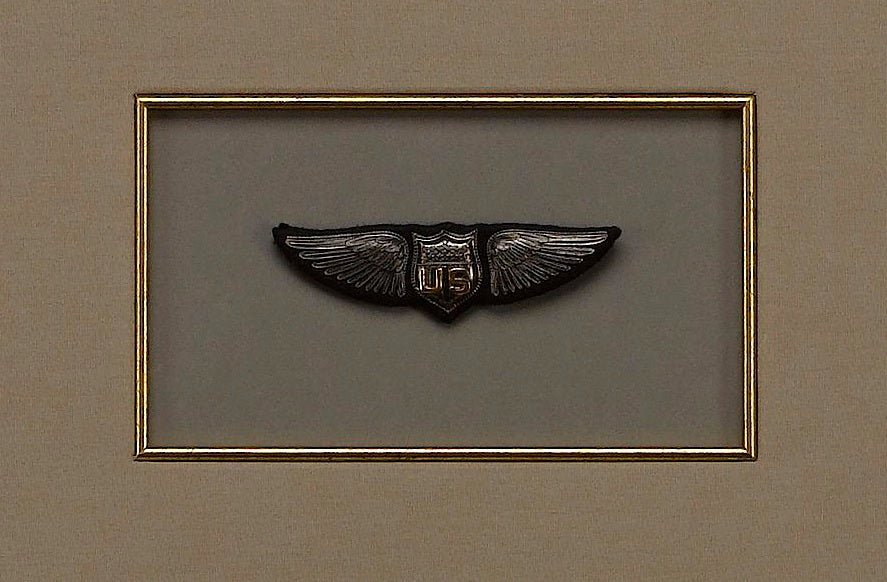
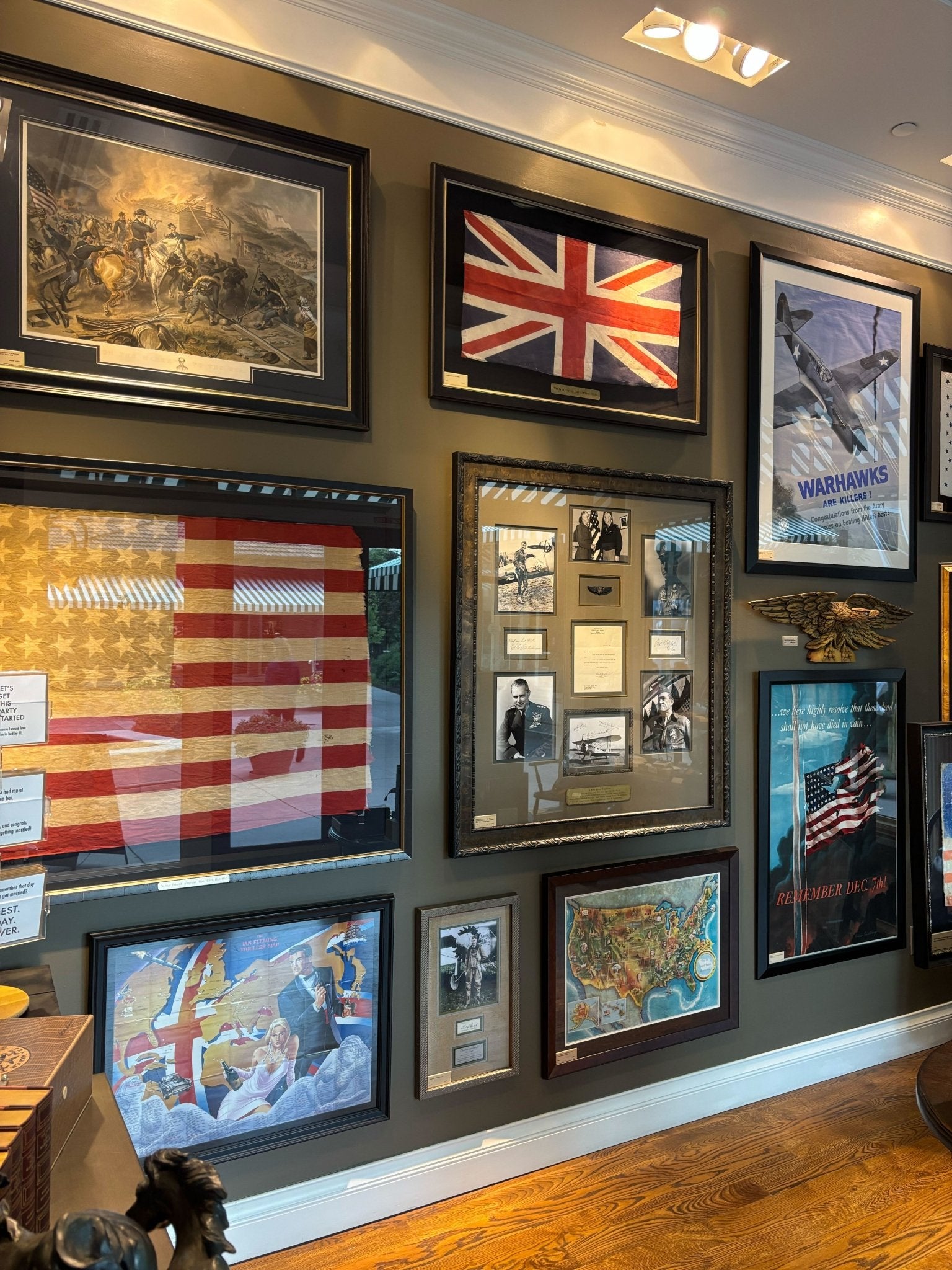
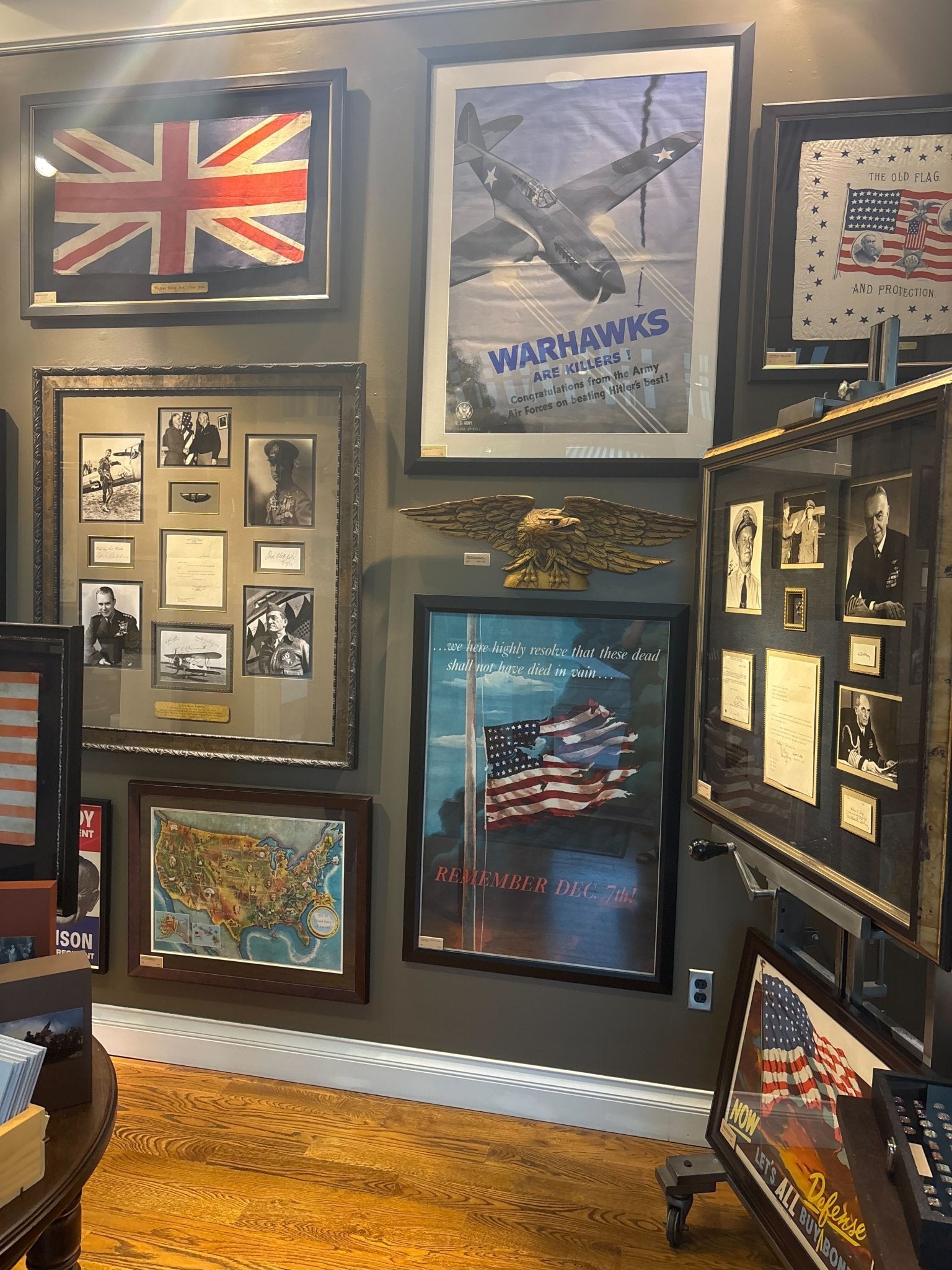
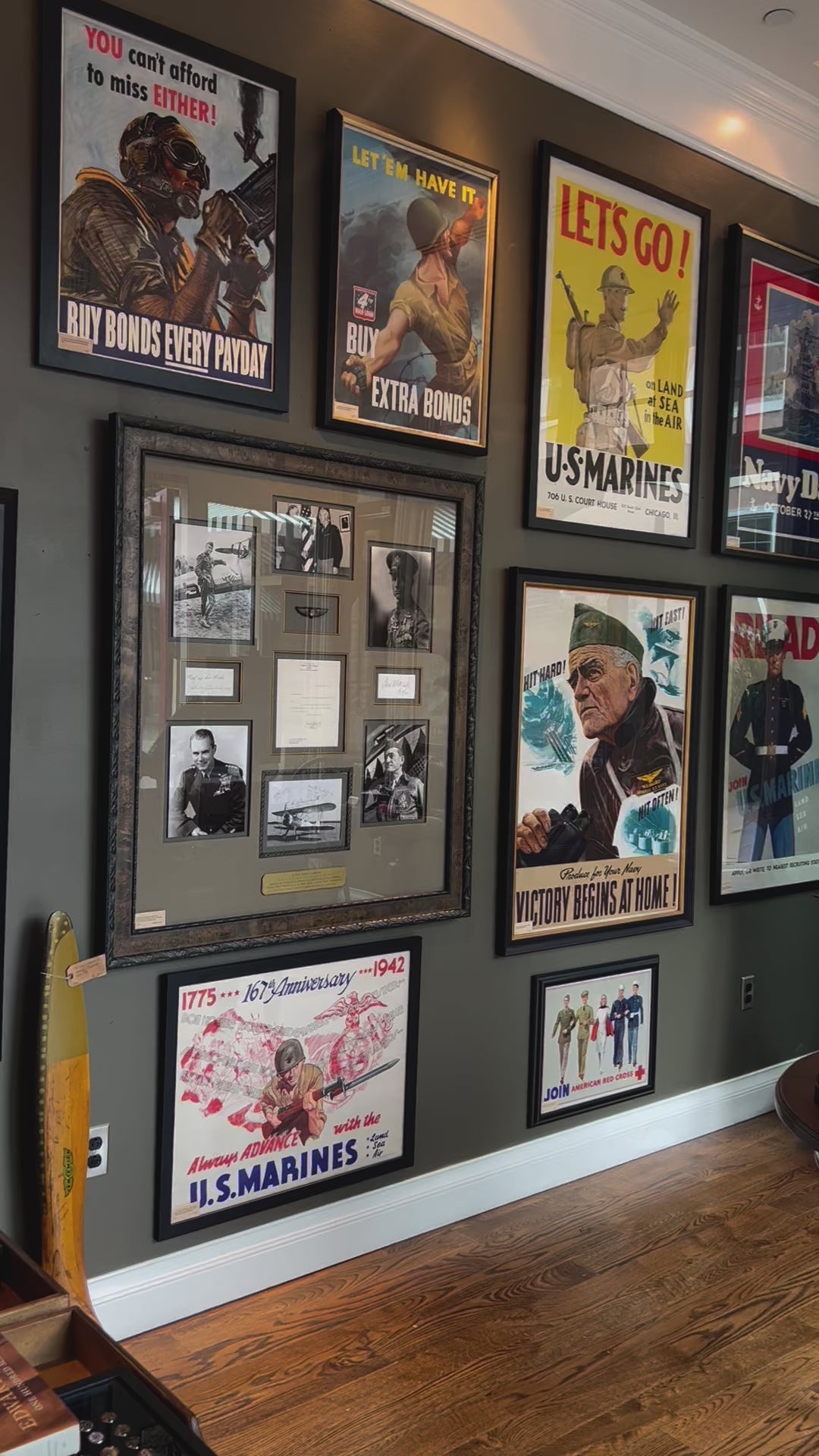
Great Air Force Captains Collage, with Signatures of Chennault, Arnold, Vandenberg, Spaatz, Mitchell, and Rickenbacker
Offered is a unique collage featuring signatures from some of the greatest captains in history: Claire Chennault, Henry “Hap” Arnold, Hoyt Vandenberg, Carl “Tooey” Spaatz, William “Billy” Mitchell and Edward “Eddie” Rickenbacker. These men are some of the most influential figures in U.S. Air Force history. Each captain was involved in WWI and/or WWII, some were aces who proved the usability and effectiveness of airpower, and others were brilliant leaders who paved the way for U.S. victories and the development of the U.S. Air Force.
This framed collage includes original signatures on cards, a letter, and a photo. A photo of a biplane is featured at bottom and includes signatures from Claire Chennault, Hap Arnold, and Hoyt Vandenberg. There is also a letter, dated 1942 and featured prominently in the center of the collage, that is written to Elwood Maurer and signed by Carl Spaatz. Two cards appear on either side of the letter, with signatures from Eddie Rickenbacker and William Mitchell. Complimentary black and white photographs accompany the signatures elements as well as a decorative pair of WWI pilot wings. Each individual included in the collage has had a major impact on the U.S. military:
William “Billy” Mitchell
Billy Mitchell’s photograph appears at the top right of the collage, situated above his signature card. Mitchell served as an Army Officer in WWI and was an early advocate for the U.S. Air Force. Michell is considered by many to be the father of the U.S. Air Force for the work he did to establish the branch. As the first American airman to cross enemy lines in WWI, Mitchell was named Lieutenant Colonel of the American Expeditionary Forces in June 1917.
Henry H. “Hap” Arnold
Hap Arnold’s signature appears on the photo of a biplane at the bottom of the collage. He is also shown in the photo at top, where he appears shaking hands with Spaatz. H. H. Arnold was the Commander-in-Chief of the Air Force and was instrumental in planning aerial attacks against Japan and daylight bombings raids on Germany in WWII. He developed many of the fateful strategic decisions made during WWII. Instructed by the Write Brothers, Hap Arnold’s pilot career led him to eventually help establish the Air Force as it is known to be today.
Edward “Eddie” Rickenbacker
Eddie Rickenbacker is depicted in the top left photo, above the card with his signature. Rickenbacker is considered the most celebrated U.S. air ace of WWI. In a time when aerial battles were novel, Rickenbacker became the nation’s first fighter squadron commander. He accumulated twenty-six victories and led the 94th Aero Pursuit “Hat-in-the-Ring” Squadron as the first all-American fighter squadron to engage in combat.
Carl “Tooey” Spaatz
Tooey Spaatz's signature is present on the 1942 letter in the center, written to Elwood Maurer. He is depicted in the top photograph shaking Arnold’s hand. During WWII, Spaatz served as a commanding general of the Twelfth Air Force in North Africa and in February 1943, he assumed command of the Northwest African Air Force. Spaatz took command of United States Strategic Air Forces in January 1944 and led the air war against Germany until the war's end. In July 1945, Spaatz moved his headquarters to the Pacific Ocean Theater. It was there that he received the order from the War Department for the 20th Air Force to drop atomic bombs on Japan. After the war, Spaatz became the first Chief of Staff of the independent U.S. Air Force in 1947.
Claire Chennault
Claire Chennault is depicted in the photograph at bottom right of the collage, and his signature appears in the photo of a biplane. Starting in early 1941, Chennault commanded the 1st American Volunteer Group, nicknamed the Flying Tigers, and headed the uniformed U.S. Army Air Forces units that replaced it in 1942. The Flying Tigers were given the nickname largely because of the large-toothed smile on the nose of their planes, seen in the background of the photo of Chennault. The group was created secretly by an order of President Roosevelt and were responsible for destroying almost 300 enemy airplanes and were highly active in the Pacific theater after the attack on Pearl Harbor.
Hoyt S. Vandenberg
Hoyt Vandenberg is depicted in the photo at bottom left, beside his signature on the photo of the biplane in center. Vandenberg was instrumental in developing airpower strategies that won key Allied victories in North African, Sicilian, and Italian campaigns during WWII. Vandenberg played a major role in planning the air support for the Invasion of Normandy, earning the Distinguished Service Medal. He commanded the 9th air force in WWII allowing for Allied advances through Europe and into Germany, eventually becoming a General in the newly independent U.S. Air Force.
CONDITION:
All signature elements are in overall near fine condition. The letter is clean and bright with only two horizontal creases from where the paper was originally folded. The Mitchell signature card is bright and without damage. The Rickenbacker signature card is slightly soiled, but the handwriting is still clearly visible. All aspects of the collage are framed together according to conservation standards in an attractive, archival burl wood frame with taupe acid-free mats and UV conservation glass.
Framed Dimensions: 47.5" H x 43" W x 2" D
Accompanied by our company's letter of authenticity.
Pickup currently unavailable at Colorado

Great Air Force Captains Collage, with Signatures of Chennault, Arnold, Vandenberg, Spaatz, Mitchell, and Rickenbacker
Colorado
1 Lake Avenue
Colorado Springs CO 80906
United States
Choose options









Frequently Asked Questions
FAQs
Yes, all of our Antiques are certified authentic. Every antique comes with a signed Letter of Authenticity that details the item’s history, its current condition including any conservation, binding, or framing work, and the item’s provenance. The Letters of Authenticity are priced valuations by our authentication specialists, who assure that items are original and unconditionally guaranteed as genuine for life.
We pack and ship your items from our gallery in Colorado Springs. You may also choose to come pick up your order. Antique items are carefully packed and insured during shipping. The shipping price will be calculated at checkout.
We acquire from a variety of trusted sources all over the world, but mostly through auctions and private collections within the United States. All provenance information will be listed on the Letter of
Authenticity accompanying your purchase.

